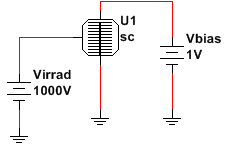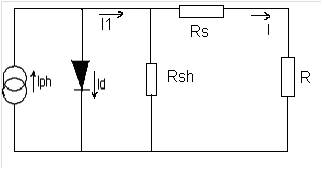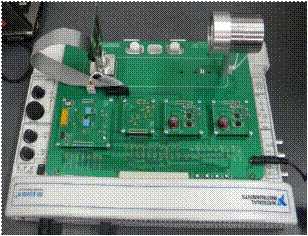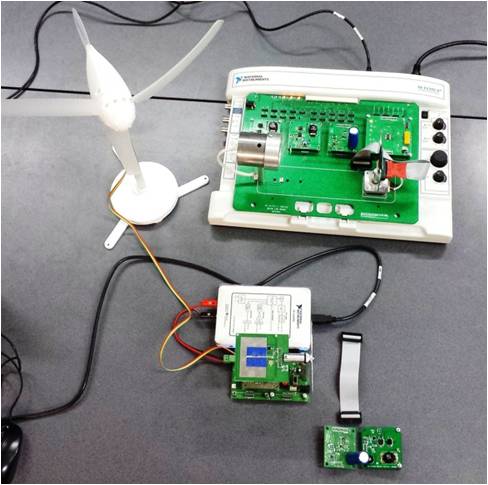-
NI Community
- Welcome & Announcements
-
Discussion Forums
- Most Active Software Boards
- Most Active Hardware Boards
-
Additional NI Product Boards
- Academic Hardware Products (myDAQ, myRIO)
- Automotive and Embedded Networks
- DAQExpress
- DASYLab
- Digital Multimeters (DMMs) and Precision DC Sources
- Driver Development Kit (DDK)
- Dynamic Signal Acquisition
- FOUNDATION Fieldbus
- High-Speed Digitizers
- Industrial Communications
- IF-RIO
- LabVIEW Communications System Design Suite
- LabVIEW Electrical Power Toolkit
- LabVIEW Embedded
- LabVIEW for LEGO MINDSTORMS and LabVIEW for Education
- LabVIEW MathScript RT Module
- LabVIEW Web UI Builder and Data Dashboard
- MATRIXx
- Hobbyist Toolkit
- Measure
- NI Package Manager (NIPM)
- Phase Matrix Products
- RF Measurement Devices
- SignalExpress
- Signal Generators
- Switch Hardware and Software
- USRP Software Radio
- NI ELVIS
- VeriStand
- NI VideoMASTER and NI AudioMASTER
- VirtualBench
- Volume License Manager and Automated Software Installation
- VXI and VME
- Wireless Sensor Networks
- PAtools
- Special Interest Boards
- Community Documents
- Example Programs
-
User Groups
-
Local User Groups (LUGs)
- Aberdeen LabVIEW User Group (Maryland)
- Advanced LabVIEW User Group Denmark
- ASEAN LabVIEW User Group
- Automated T&M User Group Denmark
- Bangalore LUG (BlrLUG)
- Bay Area LabVIEW User Group
- Bordeaux Atlantique LabVIEW User Group - BATLUG
- British Columbia LabVIEW User Group Community
- Budapest LabVIEW User Group (BudLUG)
- Chicago LabVIEW User Group
- Chennai LUG (CHNLUG)
- Cleveland LabVIEW User Group
- CLUG : Cambridge LabVIEW User Group (UK)
- CSLUG - Central South LabVIEW User Group (UK)
- Dallas Fort Worth (DFW) LabVIEW User Group
- North Dallas User Group Community
- Delhi NCR (NCRLUG)
- Denver - ALARM
- DMC LabVIEW User Group
- DutLUG - Dutch LabVIEW Usergroup
- Egypt NI Chapter
- Gainesville LabVIEW User Group
- GLA Summit - For all LabVIEW and TestStand Enthusiasts!
- GUNS
- Houston LabVIEW User Group
- High Desert LabVIEW User Group
- Highland Rim LabVIEW User Group
- Huntsville Alabama LabVIEW User Group
- Hyderabad LUG (HydLUG)
- LabVIEW-FISICC
- Indian LabVIEW Users Group (IndLUG)
- Ireland LabVIEW User Group Community
- ItalVIEW - Milan, Italy LabVIEW+ Local User Group
- Israel LabVIEW User Group
- LabVIEW GYM
- LabVIEW LATAM
- LabVIEW Local User Group Nantes
- LabVIEW Team Indonesia
- LabVIEW - University of Applied Sciences Esslingen
- LabVIEW User Group Berlin
- LabVIEW User Group Euregio
- LabVIEW User Group Munich
- LabVIEW Vietnam
- Louisville KY LabView User Group
- London LabVIEW User Group
- Long Island LabVIEW User Group
- LUGG - LabVIEW User Group at Goddard
- LUGNuts: LabVIEW User Group for Connecticut
- LUGE - Rhône-Alpes et plus loin
- LUG of Kolkata & East India (EastLUG)
- LVUG Hamburg
- Madrid LabVIEW Local User Group (MadLUG)
- Madison LabVIEW User Group Community
- Mass Compilers
- ANZ (Australia & New Zealand) LabVIEW User Group
- Midlands LabVIEW User Group
- Milwaukee LabVIEW Community
- Minneapolis LabVIEW User Group
- Montreal/Quebec LabVIEW User Group Community - QLUG
- NASA LabVIEW User Group Community
- Nebraska LabVIEW User Community
- New Zealand LabVIEW Users Group
- NI UK and Ireland LabVIEW User Group
- NOBLUG - North Of Britain LabVIEW User Group
- NOCLUG
- NORDLUG Nordic LabVIEW User Group
- Pasadena LabVIEW User Group
- North Oakland County LabVIEW User Group
- Norwegian LabVIEW User Group
- NWUKLUG
- RT LabVIEW User Group
- Orange County LabVIEW Community
- Orlando LabVIEW User Group
- Oregon LabVIEW User Group
- Ottawa and Montréal LabVIEW User Community
- Phoenix LabVIEW User Group (PLUG)
- Politechnika Warszawska
- PolŚl
- Rhein-Main Local User Group (RMLUG)
- Rhein-Ruhr LabVIEW User Group
- Romandie LabVIEW User Group
- Romania LabVIEW Local User Group (RoLUG)
- Rutherford Appleton Laboratory (STFC) - RALLUG
- Serbia LabVIEW User Group
- Sacramento Area LabVIEW User Group
- San Diego LabVIEW Users
- Sheffield LabVIEW User Group
- Silesian LabVIEW User Group (PL)
- South East Michigan LabVIEW User Group
- Southern Ontario LabVIEW User Group Community
- South Sweden LabVIEW User Group
- SoWLUG (UK)
- Space Coast Area LabVIEW User Group
- TU Delft LabVIEW User Group (TUDLUG)
- Stockholm LabVIEW User Group (STHLUG)
- Swiss LabVIEW User Group
- Swiss LabVIEW Embedded User Group
- Sydney User Group
- Top of Utah LabVIEW User Group
- UKTAG – UK Test Automation Group
- Utahns Using TestStand (UUT)
- UVLabVIEW
- VeriStand: Romania Team
- WaFL - Salt Lake City Utah USA
- Washington Community Group
- Western NY LabVIEW User Group
- Western PA LabVIEW Users
- West Sweden LabVIEW User Group
- WPAFB NI User Group
- WUELUG - Würzburg LabVIEW User Group (DE)
- Yorkshire LabVIEW User Group
- Zero Mile LUG of Nagpur (ZMLUG)
- 日本LabVIEWユーザーグループ
- [IDLE] LabVIEW User Group Stuttgart
- [IDLE] ALVIN
- [IDLE] Barcelona LabVIEW Academic User Group
- [IDLE] The Boston LabVIEW User Group Community
- [IDLE] Brazil User Group
- [IDLE] Calgary LabVIEW User Group Community
- [IDLE] CLUG - Charlotte LabVIEW User Group
- [IDLE] Central Texas LabVIEW User Community
- [IDLE] Grupo de Usuarios LabVIEW - Chile
- [IDLE] Indianapolis User Group
- [IDLE] LA LabVIEW User Group
- [IDLE] LabVIEW User Group Kaernten
- [IDLE] LabVIEW User Group Steiermark
- [IDLE] தமிழினி
- Academic & University Groups
-
Special Interest Groups
- Actor Framework
- Biomedical User Group
- Certified LabVIEW Architects (CLAs)
- DIY LabVIEW Crew
- LabVIEW APIs
- LabVIEW Champions
- LabVIEW Development Best Practices
- LabVIEW Web Development
- NI Labs
- NI Linux Real-Time
- NI Tools Network Developer Center
- UI Interest Group
- VI Analyzer Enthusiasts
- [Archive] Multisim Custom Simulation Analyses and Instruments
- [Archive] NI Circuit Design Community
- [Archive] NI VeriStand Add-Ons
- [Archive] Reference Design Portal
- [Archive] Volume License Agreement Community
- 3D Vision
- Continuous Integration
- G#
- GDS(Goop Development Suite)
- GPU Computing
- Hardware Developers Community - NI sbRIO & SOM
- JKI State Machine Objects
- LabVIEW Architects Forum
- LabVIEW Channel Wires
- LabVIEW Cloud Toolkits
- Linux Users
- Unit Testing Group
- Distributed Control & Automation Framework (DCAF)
- User Group Resource Center
- User Group Advisory Council
- LabVIEW FPGA Developer Center
- AR Drone Toolkit for LabVIEW - LVH
- Driver Development Kit (DDK) Programmers
- Hidden Gems in vi.lib
- myRIO Balancing Robot
- ROS for LabVIEW(TM) Software
- LabVIEW Project Providers
- Power Electronics Development Center
- LabVIEW Digest Programming Challenges
- Python and NI
- LabVIEW Automotive Ethernet
- NI Web Technology Lead User Group
- QControl Enthusiasts
- Lab Software
- User Group Leaders Network
- CMC Driver Framework
- JDP Science Tools
- LabVIEW in Finance
- Nonlinear Fitting
- Git User Group
- Test System Security
- Developers Using TestStand
- Online LabVIEW Evaluation 'Office Hours'
- Product Groups
- Partner Groups
-
Local User Groups (LUGs)
-
Idea Exchange
- Data Acquisition Idea Exchange
- DIAdem Idea Exchange
- LabVIEW Idea Exchange
- LabVIEW FPGA Idea Exchange
- LabVIEW Real-Time Idea Exchange
- LabWindows/CVI Idea Exchange
- Multisim and Ultiboard Idea Exchange
- NI Measurement Studio Idea Exchange
- NI Package Management Idea Exchange
- NI TestStand Idea Exchange
- PXI and Instrumentation Idea Exchange
- Vision Idea Exchange
- Additional NI Software Idea Exchange
- Blogs
- Events & Competitions
- Optimal+
- Regional Communities
- NI Partner Hub
-
 bikeron
on:
New International Rectifier Components in Multisim 14.0
bikeron
on:
New International Rectifier Components in Multisim 14.0
-
 giondoo77
on:
Creating Custom Arduino Shields With NI Multisim
giondoo77
on:
Creating Custom Arduino Shields With NI Multisim
- robo_Jeff on: Multisim Touch for iPad Now Available
-
 doa4378
on:
New Models for Photovoltaic Cells in Multisim
doa4378
on:
New Models for Photovoltaic Cells in Multisim
- Mahmoud_W on: Connectors for NI 78xxR Multifunction RIO series in Multisim
- Mahmoud_W on: Search for Components in Digi-Key's Database While Building Your Circuit in Multisim
- BMac on: Ultiboard Mating PCB Design of the new NI GPIC Platform for Energy Applications
-
 Henry_Lavery
on:
Automotive Application: Hall Effect Sensor in Multisim
Henry_Lavery
on:
Automotive Application: Hall Effect Sensor in Multisim
- GarretF on: LabVIEW-Multisim Co-Simulation with Variants and Hierarchical Blocks (Part 2)
-
 Control_Dir
on:
Adding 3D Information in Ultiboard
Control_Dir
on:
Adding 3D Information in Ultiboard
Re: New Models for Photovoltaic Cells in Multisim
- Subscribe to RSS Feed
- Mark as New
- Mark as Read
- Bookmark
- Subscribe
- Printer Friendly Page
- Report to a Moderator
NI Multisim is a powerful tool used to simulate and prototype power electronics circuit designs. Multisim has large database of configurable power component models along with existing SPICE models from various semiconductor manufacturers. The simulation capabilities in Multisim enable the evaluation of different power circuits of different ratings at an early design stage.
This is the first of a series of blog posts about new power electronics models specifically developed for simulations renewable energy applications in NI Multisim. The models were developed in collaboration with the Virtual Instrumentation and Renewable Energy Laboratory at the Transilvania University of Brasov in Romania.
In this article, three solar Photo-Voltaic (PV) cell models are presented:
1. Basic PV Cell
this model represents the ideal and most simplistic case of a PV cell model. the solar cell is modeled using an ideal current source in parallel with a diode and a load resistance.

The model is available in the Multisim file Testing the Solar Cell Modules_1.ms13 attached to this post. Connected to the model are two DC sources; Virrad representing the level of illumination where 1000V=1000W/m2 a, while Vbias allows the variation of the bias point to measure the output I-V characteristics. In a real world application, Vbias would be replaced by a load.

The internal parameters of the models are set based on a Si solar cell example:
- The reverse saturation current (Io = 10-11 A)
- The short circuit current (Isc = 0.034 A)
- The area of the solar cell (A = 1cm2)
These parameters could be viewed and altered simply by double-clicking the component on the schematic and clicking on Edit model in the Value tab:
Running a DC Sweep simulation in Multisim to evaluate the output current at different bias points as well as the output power, the below graph could be reproduced
2. Advanced PV Cell with Series and Shunt Resistance
This model is based on the single exponential model published in [1]. It add a shunt and series parameters to model the panel resistance.

The same Si solar cell example was used to set the following parameters:
- The constant material (B = 5.769*106 )
- The short circuit current (Isc = 0.034 A)
- The area of the solar cell (A = 1cm2)
- The energy bangap (Eg = 1.11eV)
- The series resistance (Rs = 0.1 Ω)
- The shunt resistance (Rsh = 10000 Ω)
In this advanced model the open circuit voltage of the solar cell depends on the material of the solar cell expressed in the material constant B and the energy band gap Eg. The material constant can be determined using the variation of the reverse saturation current function of the temperature and it theoretically derives from this relation:

While the values of the energy Bandgap for some important semiconductor materials are available in the table below:
|
Semiconductor materials |
Energy bangap [eV] |
|
Si |
1.11 |
|
CdTe |
1.43 |
|
GaAs |
1.45 |
|
InP |
1.27 |
|
GaP |
2.25 |
The model and the test circuit are available in the attachment Testing the Solar Cell Modules_2.ms13. Running a Nested DC Sweep yields the following I-V characteristics of the PV cell
3. Advanced PV Panel
This is a model of a PV panel based on a number of individual solar cells connected in series using one diode model with irradiance and temperature parameters. It is based on the physical parameters of the BP-MSX120 PV panel, however these parameters could be altered in the model to match other PV panels:
- The short circuit current (Isc = 3.87 A)
- The series resistance (Rs = 0.47 Ω)
- The shunt resistance (Rsh = 1365 Ω)
- The temperature coefficient of the power (kp = −0.5 ± 0. 05)
- The number of solar cells in series (ns = 72)
- The ideality factor of diode (A = 1.397)
The example testing circuit to validate this model is in the attached file Testing the Solar Cell Modules_3.ms13
A nested temperature sweep is performed to evaluate the I-V characteristics of the panel under different temperature conditions:

About the Virtual Instrumentation and Renewable Energy Laboratory - Transilvania University
Laboratory members:
Dr. Petru Adrian COTFAS
Dr. Daniel Tudor COTFAS
The lab is integrated in the Electronics and Computers Department, Electronics and Computers Science Faculty, Transilvania University of Brasov. Transilvania University of Brasov was founded in 1948 and has now 18 faculties, offering bachelor, master and doctoral studies to over 22000 students. Advanced research is developed in 22 centers focusing on major topics of sustainable development: Renewable Energy Systems, novel Energy Efficiency in processes, advanced solutions for Energy Saving products and processes, Natural Resources preservation and use, Health and Life Quality, and Education, Culture, Communication and Economic Development.
There are many educational and industrial applications using the NI products at the University:
- Simulation of Physics labs using the graphical programming language LabVIEW
- SolarLab – educational and research system powered by NI LabVIEW and NI ELVIS II platform

- RELab (Renewable Energy Laboratory) – educational and research system powered by NI LabVIEW and NI ELVIS II and myDAQ platforms

- STNV 25120469 – research contract for development of drivers LabVIEW Ecochemie - Netherlands
- Weighing and monitoring system of Mass Distribution for S.C. IAR S.A. Brasov, Romania
- Management system for the utilities implemented at S.C. IAR S.A. Brasov, Romania
The ReLab system is a very good solution for the study of the renewable energy. The design of the entire RELab circuit was done using the NI Multism and NI Ultiboard. The RELab system was recognized as a break-through tool in education and won three awards at international competitions organized by National Instruments:
- Graphical System Design Achievement Awards - Education category - August 2013
- Graphical System Design Achievement Awards - Editors Choice Award - August 2013
- Graphical System Design Achievement Awards - NI Community’s Choice - August 2013.
References
- 1. D. T. Cotfas, P. A. Cotfas, S. Kaplanis: Methods to determine the dc parameters of solar cells: A critical review, Renewable and Sustainable Energy Reviews, vol. 28, 2013, pp. 588–596.
- 2. http://pveducation.org/pvcdrom/solar-cell-operation/effect-of-temperature
- 3. D. Sera, R. Teodorescu, PV panel model based on datasheet values, Industrial Electronics, 2007. ISIE 2007. IEEE International Symposium on, pp. 2392 – 2396, 2007
You must be a registered user to add a comment. If you've already registered, sign in. Otherwise, register and sign in.
